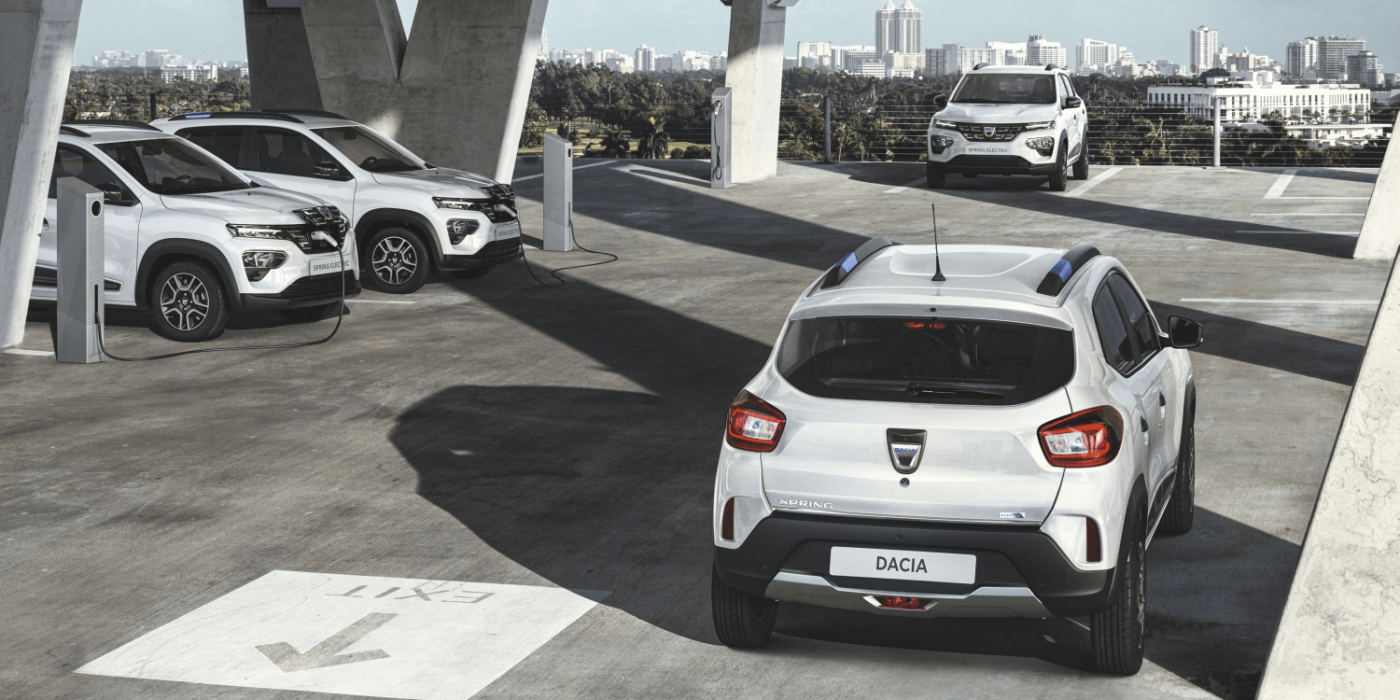E.Leclerc orders 3,000 Dacia Spring & 1,000 Zoe electric cars
The French car rental and supermarket operator E.Leclerc has just ordered a whopping 3,000 Dacia Spring Electric and 1,000 Renault Zoe. One of the group’s goals is to offer the new Dacia Spring Electric in all 504 E.Leclerc rental outlets from 1 March 2021.
++ Kindly see our update below ++
Dacia says that E.Leclerc will offer its debut electric “exclusively for France”. The Dacia Spring Electric is to be launched at the beginning of 2021 but initially only in a car-sharing version. Up to now, Renault had said they would use the EV in their own carsharing Zity. Now it is clear that the purely electric Dacia will make its debut at E.Leclerc. Private customers should order the vehicle “before summer”, but deliveries are not expected to start until fall 2021.
E.Leclerc and the Renault Group have been cooperating on the expansion of electric mobility since 2010. In the beginning, the cooperation focused mainly on the Renault Zoe. As a signatory to the “100,000 charging points” charter sponsored by the French Ministry of Transport, E.Leclerc announced in October 2019 that it would expand its electric rental car fleet to up to 10,000 vehicles by 2025.
Dacia had introduced the Spring Electric in mid-October. Dacia wants to position the modified offshoot of the Renault City sold in China as “the cheapest electric city car on the European market”. The model has a power output of 33 kW and a battery of 26.8 kWh. According to the manufacturer, the WLTP test cycle range is up to 225 kilometres; in the city cycle, 295 kilometres.
The Spring is 3.73 meters long, 1.62 meters wide and 1.49 meters high. The wheelbase of 2.42 meters should also offer enough space for larger passengers. The trunk holds up to 300 litres (600 litres with folded back seatbacks). Dacia plans to launch a special cargo version with 800 litres of loading space at a later date.
Dacia’s Spring will be able to charge up to 6.6 kW of alternating current. On a wall box with 3.7 kW, the charging time is less than eight hours; it is five hours with 7.4 kW or more. A 30 kW DC charger will also be available as an option, but the charging power will not be available throughout the entire charging process due to the size of the battery. Dacia says that the car will achieve an 80 per cent charge in less than one hour.
While Dacia’s price has not yet been made public, there are some indications. In October, the Hungarian Dacia website quoted a price of 6.49 million forints before subsidy for the first 100 electric car units, which currently corresponds to around 17,835 euros. However, shortly afterwards, Dacia Hungary updated the website and removed the price indication.
Update 06 April 2021: Dacia has begun delivering the Spring EV to the French car rental company E.Leclerc. The first vehicle was handed over at the E.Leclerc centre in Orly at the end of March, and Dacia aims to complete the major order by the middle of the year.
As Dacia belongs to Renault, CEO Luca de Meo was also present at the handover in Orly to acknowledge the importance of the order for Dacia. “We are helping to make electric mobility accessible to as many people as possible, in price, practicality and proximity,” de Meo said. “I am convinced that the mobility of tomorrow will be built into an ecosystem with useful, concrete and practical partnerships like this one.”
E.Leclerc has launched a rental offer for the Dacia Spring at just five euros per day, insurance and maintenance included, and without the commitment of duration.
With reporting by Nora Manthey.
renault.com, renault.com (update Aporil 2021)





1 Comment